Yoga advice for female runners and other women to maintain heart health | 8 good exercises to increase strength and flexibility
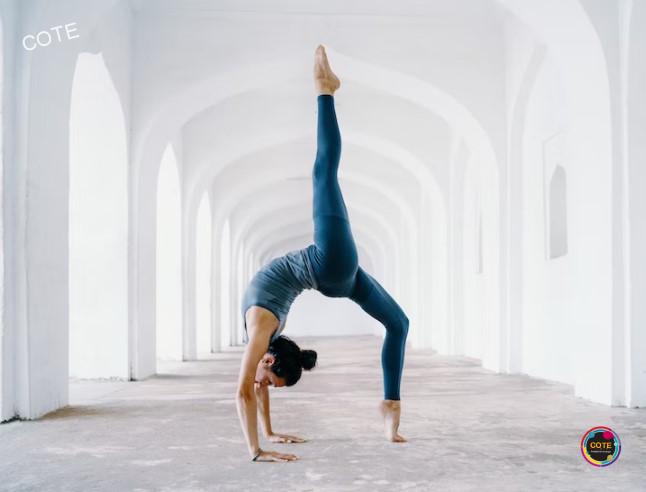
Have you ever thought about using yoga for runners? Yoga has several advantages beyond just keeping you flexible. Yoga can enhance your sleep, focus, endurance, muscle strength, balance, and resting heart rate. It can also help you create stronger muscles.
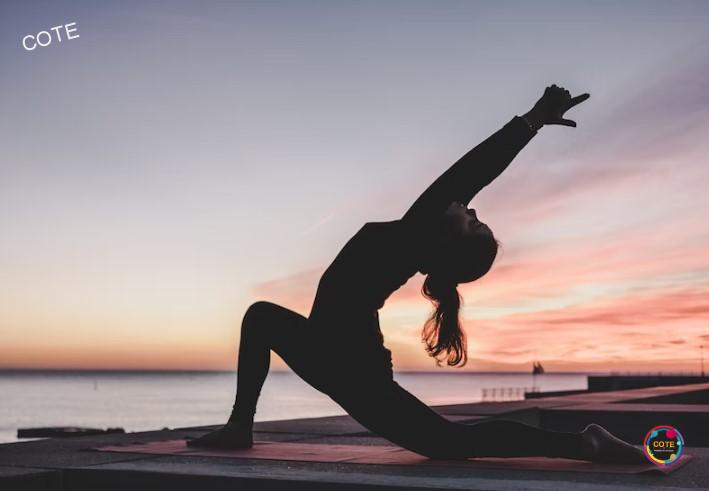
All of these factors can improve a runner’s performance, and research published in the International Journal of Yoga(opens in new tab) found that yoga can truly assist athletes to increase their body’s efficiency by improving oxygen intake and use.

On a yoga mat, people typically practice yoga. The best yoga mats(opens in new tab) offer a sticky surface to keep you securely anchored while holding postures and are comfortable for bonier joints.
- Lunge down
Running requires a low lunge. As a runner, you can’t ignore the lunge, a motion with several variations and tremendous training benefits, says Rotherham. The low lunge can improve your body’s proprioception, balance, and mobility in the thoracic, hips, and ankle joints. In addition to strengthening the glutes, the low lunge primarily stretches the quadriceps, abdominals, and hip flexors.

Step 1: Step your right foot forward between the hands while still in downward dog, lowering your left knee to the floor. Let your left toes out.
Place your hands on either side of your right foot in step two. As you breathe into the lunge, continue to press into the top of your right foot and your left foot.
Step 3: To extend the quadriceps in your left leg, squat down while pressing into your feet. Draw three full breaths.
Step 4: Switch legs, bringing your right leg back and your left foot forward, then repeating.
- Downward dog
Why it’s advantageous for runners to perform the downward dog is explained by physiotherapist Anju Nandal. She claims that it develops both flexibility and strength. You will feel the effects of downward dog in your arms, shoulders, back, calves, hamstrings, and ankles since it works both your upper and lower bodies simultaneously.
“Downward dog stimulates many tiny stabilising muscles in the foot in addition to giving a terrific ankle and calf stretch. Running requires feet that can adapt to the surface, respond swiftly to changes in the terrain, and effectively transmit weight.

Step 1: Starting on all fours, tuck your toes and place your hands in front of your shoulders. your fingers far apart.
Step 2: Raise your hips back and up as you exhale to lengthen your spine.
Step 3: If your shoulders are rounded, maintain your knees bent. Pushing the floor away from you, you should rise up and out of your shoulders while maintaining a flat upper back.
Step 4: Now, take three full breaths. Stay steady or move around the area while bending one knee at a time.
- A powerful side stretch
Intense side stretch pose is a powerful stretch that concentrates on the spine in addition to the legs, ankles, and feet.
What this position can achieve for runners is explained by Rotheram. According to her, “this pose helps with mobility in the hips and spine and eliminates stiffness in the legs and hip muscles.” “With the head resting on the knees, the core muscles are in use. Drawing back the shoulders helps to straighten rounded, sagging shoulders.
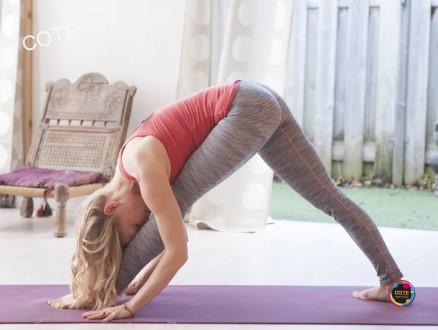
Step 1: Take a standing position with your feet about a leg’s width apart. Turn your left toes in toward the middle of your yoga mat while extending your right toe out to the short side.
Step 2: As you exhale, fold from the hips over your right leg while raising your arms up and rotating your hips in the same direction as your right foot.
Step 3: If you can, place your hands on the floor or your right shin. For support, you can wrap your arms behind you or place yoga blocks beneath your hands.
Step 4: To keep your pelvis level, continue to rotate your left hip toward your right foot as you take three deep breaths.
Step 5: Take a deep breath, stand up by pressing firmly into your feet, tightening your thighs, and raising your arms. On the opposite side, repeat.
- Hero posture when supine
According to Rotherham, the reclining hero stance has numerous advantages for runners. “The reclining hero posture promotes flexibility and healthy hip, leg, and knee alignment. It strengthens the lower back while stretching the quads and promoting and training internal rotation, according to the expert.

Step 1: Kneel down and spread your feet so they are wider than your hips. Depending on how it feels for your knees, you may or may not keep your knees close together.
Step 2: Sit back between your heels while using your hands to roll your calf muscles out. For support, place a block or pillow under the buttocks.
Step 3: You can now begin to walk backward on your hands, being careful not to experience any knee pain. Tucking the tailbone to the backs of the knees may help you achieve the desired flexibility in your thighs.
Step 4: Continue regressing until you find a comfortable stopping point. You can find yourself on your hands, elbows, or back. Choose a version and hold it for five full breaths.
Step 5: To exit, raise yourself off your heels and walk yourself back up using your hands. Give your legs a good shake by spreading them wide.
- Bridge The bridge pose is excellent for extending your muscles after a long run and strengthening your hips. According to Rotheram, running can exert strain on your hips, which over time may have an adverse effect on your performance.
“Bridge position is here to assist you strengthen your hip muscles, which is fortunate. We are aware of the significance of the gluteal muscles for runners, and this pose can be extremely beneficial for strengthening the posterior chain. Additionally, it extends your hip flexors and engages your core.
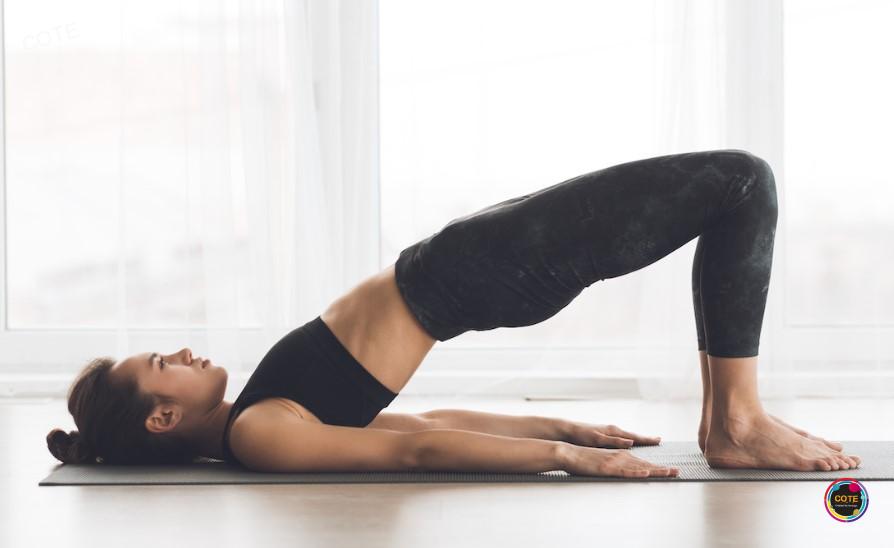
Step 1: Lie on your back with your feet next to your buttocks on the floor. Your middle fingers should be able to reach your heels.
Step 2: Spread your arms out in front of you, palms down. As you inhale, start pressing into your forearms and upper arms and begin lifting your hips.
Step 3: Continue to tuck your tailbone behind your knees and raise your hips higher. Your throat should be approaching your chest.
Step 4: Here, inhale for three full breaths before exhaling to lower yourself back down. This position can be repeated several times.
- Pigeon position when supine
According to a physiotherapist, runners can benefit greatly from the reclined pigeon stance.
According to Rotherham, the pigeon position while lying down has many advantages. It relaxes the muscles in the low back, the legs’ backs, and the area around the hips. Tightness and soreness can frequently result from failing to adequately stretch out overworked regions. Stretching these particular muscle areas gently will enable your body to recover from overuse and promote healing.
This pose, which you perform on your back, is excellent for both warming up and cooling down. If you have any hip instability or knee issues, lying down is a safer hip-opener because it puts no pressure on your knees or hips.
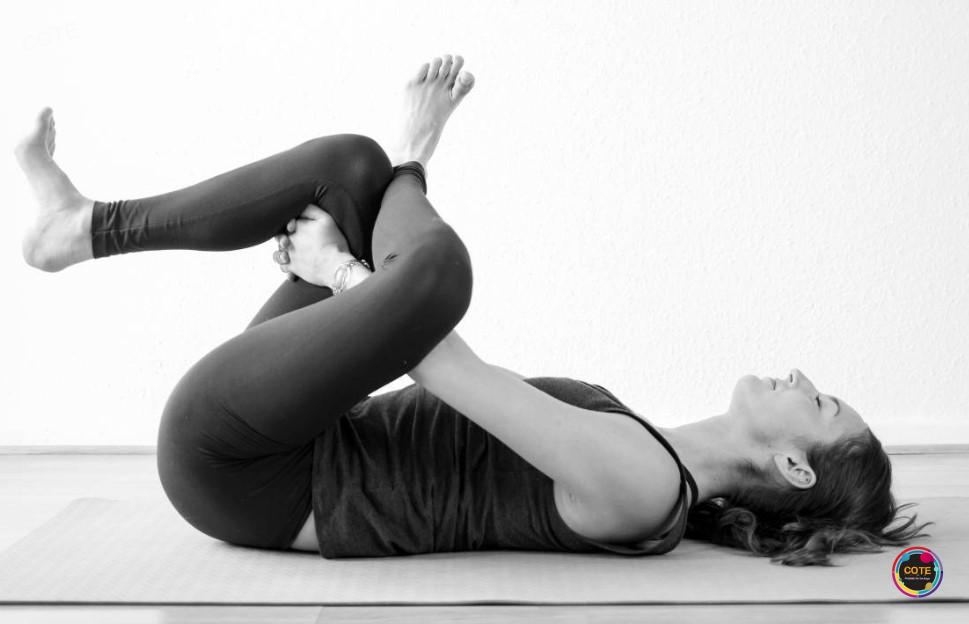
Step 1: Maintaining your bridge position, bring your right ankle in front of your left knee.
Step 2: To feel a stretch in your outer right hip, make sure your right knee is moving away from your right shoulder. If you can’t feel anything in your outer right hip, you can either stay here with your left foot on the floor or move on to the next stage.
Step 3: Take a deep breath and raise your left foot off the ground. To take the back of the left thigh, wrap your left arm around the left side of the left leg and your right arm through the middle of the legs.
Step 4: Inhale deeply for five breaths before switching to the opposite side and repeating.
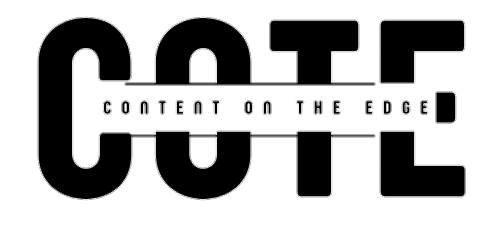
| Social Media Links:- | #CONTENTONTHEEDGE – C.O.T.E |
| Youtube- ✅ | Subscribe to the YouTube channel of Content on the Edge |
| Facebook- ✅ | Like and Follow on Facebook for Latest content videos of C.O.T.E |
| Instagram- ✅ | Follow on Instagram for Latest content |
| Twitter- ✅ | Join Content on the Edge on Twitter for latest updates |
| Telegram Channel- ✅ | Join Telegram Channel to get latest files and updates |
| Telegram Group- ✅ | Join C.O.T.E Telegram Group to get latest updates |
| Whatsapp- ✅ | Click to text C.O.T.E on Whatsapp |
| Whatsapp Channel- ✅ | Click to Join C.O.T.E Whatsapp Channel for Latest Updates |
7. Toe squat
Although it may not be to everyone’s taste, this is crucial for runners. According to Rotheram, “every pounding step you take when running puts immense stress on your feet and shins. Plantar fasciitis can be less frequent when your toes and foot soles are stretched, making your runs more tolerable. In order to avoid and lessen the discomfort of shin splints, this pose also stretches the muscles and connective tissues along the tibia.

Step 1 is to kneel down and take a seat. Lift your hips off the ground and place your hands in front of you.
Step 2: Tuck your toes and begin to shift your weight from your hips to your feet. Some people find it comfortable to rest their hands on their knees while sitting on their heels. Others find that resting their hands on the ground and bending forward is sufficient to stretch their feet.
Step 3: Before lifting up and fully releasing the feet, take five deep breaths.
- Knee to head position
Head-to-knee position, which is an excellent one to practise regularly, stretches the hamstrings, hips, and groyne muscles. This great hamstring stretching technique will help athletes and runners who must run frequently, according to Rotheram.

In the first step, sit down with your legs extended in front of you. Your right knee should be bent when you place your foot inside your left leg.
Step 2: Breathe in and set your hands down next to your hips. Lift your chest up while relaxing your shoulders away from your ears and stretching your spine. To raise the arms overhead, exhale at this point and then inhale.
Step 3: After exhaling, fold forward and hinge over your left leg from the hips up. Here, take three full breaths before switching sides.




Bridge pos is very very effective and helpful for me. Thank you so much for sharing all this information with us. Please share more !